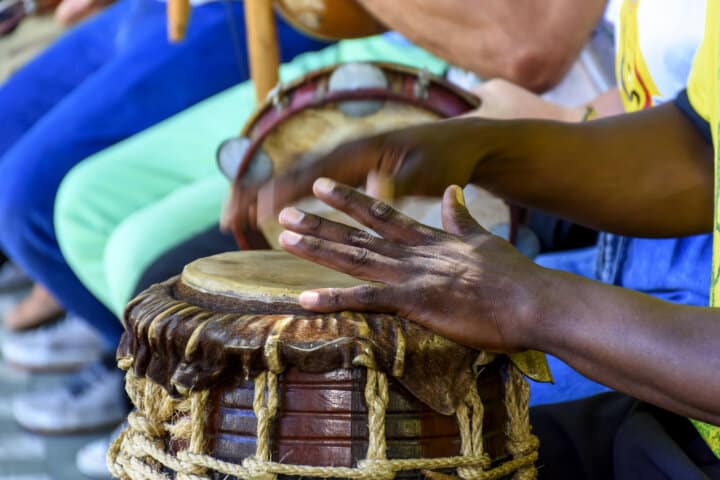The child with tension-type headache. Physical factors and interactive interventions
Ungdomar med ont i huvudet undviker aktiviteter, kan ha svårt att koncentrera sig på skolarbetet, är trötta och stannar kanske hemma från skolan, säger Birte Tornøe, doktorand vid Lunds universitet och fysioterapeut vid Herlevsjukhuset i Köpenhamn, som betonar vikten av att vara fysiskt aktiv.
Birte Tornöe
Inger Hallström, Professor
Elisabeth Hall, Professor Emerita, Elisabeth Hall, Aarhus
Lunds universitet
2014-09-05
The child with tension-type headache. Physical factors and interactive interventions
Institutionen för hälsovetenskaper
The child with tension-type headache. Physical factors and interactive interventions
Tension-type headache (TTH) in children and especially girls is a prevalent problem worldwide, and means there is a risk of school absenteeism, medication overuse and persistent headache. Knowledge about the associated physical factors is limited, as is knowledge on evidence based interventions. The overall aim of this thesis was to examine the associations of physical factors with frequent or chronic TTH in children. Furthermore to examine aspects of interactive interventions as empowering patient education studying where and how to direct interdisciplinary headache services for the child and parents from the perspective of a physiotherapist. The first study piloted computer-animated relaxation therapy with children 7-13 years of age and investigated how so young the children experienced the therapy. Furthermore it piloted enrolment procedures, the compliance of the child and parents and to gauge whether a large-scale controlled trial was warranted. The second study aimed at determining the test-retest repeatability of neck-shoulder muscle strength in healthy children 9-18 years of age. The second study also determined the test-retest repeatability of the Total Tenderness Score (TTS) and of a sub-maximal cycle ergometer test predicting maximal oxygen uptake. The third study was a case-control study aiming at examining the combined measurements of muscle strength in the neck-shoulder region, aerobic power, and pericranial tenderness in girls 9 to 18 years of age, and the measurements associations with frequent episodic or chronic TTH compared to healthy controls. The fourth study based on a randomized controlled trial examined the outcomes of specific strength training of shoulder muscles compared with counselling with nurse and physiotherapist in short defined patient education programmes for girls 9-18 years with TTH. Results from study I indicated that a nine session computer-animated relaxation therapy seemed a significantly effective learning strategy presenting a mean improvement percent of 45% of headache frequency. The children expressed a growing understanding of body reactions and an acquired ability to deactivate and regulate these reactions. The study also elucidated the enrolment procedures and capacity of the clinic for the planning of the larger study. The results from study II found acceptable test-retest repeatability,providing a stable basis for the research in study III and IV. The main findings in study III were that girls with TTH had significantly higher pericranial tenderness than controls in correlation with headache frequency (r=0.66, p<0.001).
Results indicated a significant association between reduced shoulder and neck strength and headache. There was likewise a significant association between reduced predicted VO2max and headache. From study IV the girls self-reported health related quality of life indicated experienced difficulties in physical health, emotional health and school functioning. The results showed a significant effect on headache frequency and duration from both strength training and counselling with no significant between group differences. During 22 weeks 33% of the girls had a headache reduction ≥ 30% and 26% reached a reduction of ≥ 50%. Both groups also seemed to benefit from exercising or body awareness with a significant reduction in neck extension/flexion ratio. Strength training showed a potential to increase strength and oxygen uptake. Perceived lack of time and/ or motivation constrained inclusion and dropouts.As a conclusion the results highlight that physiotherapy plays a central role in headache services in educating the children in strategies to enhance health-related physical factors and body-awareness, reduce headache and thus improve their quality of life. Strength training or relaxation therapy in combination with interdisciplinary counselling will provide positive outcomes. As both relaxation therapy and strength training presented significant outcomes the use of these interventions should be decided by the physiotherapist, the child and parents an evaluation of the child’s individual needs. Interpreting the results within an empowering patient education we can summarize that the interventions and materials used in the studies were relevant and suitable for children 7-18 years of age. It is recommended to consider the relationship between weekly exercise intensity and exercise variation in order to keep a stable weekly exercise volume.
Motivation for change and the barriers the contemporary family, children and parents may experience in order to integrate learning and change habitual physical behaviours need to be examined. The organization of patient education is recommended to be considered innovatively in order to further reach the needs of the contemporary family. This thesis presents the dimensions of empowerment that are essential in relation to the child with TTH and their parents.
Relaterade länkar

Skolbibliotek
 Åk F–Vux
Åk F–Vux Folk- och världsmusik
 Åk 4–9
Åk 4–9 




